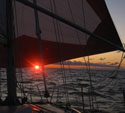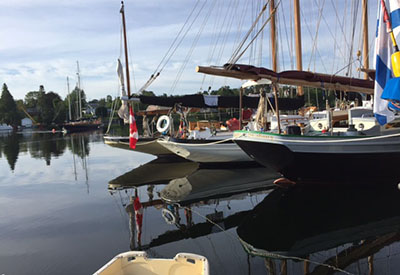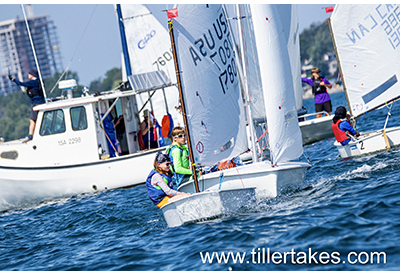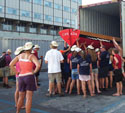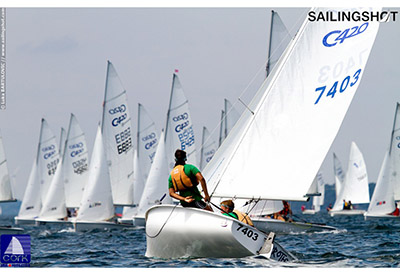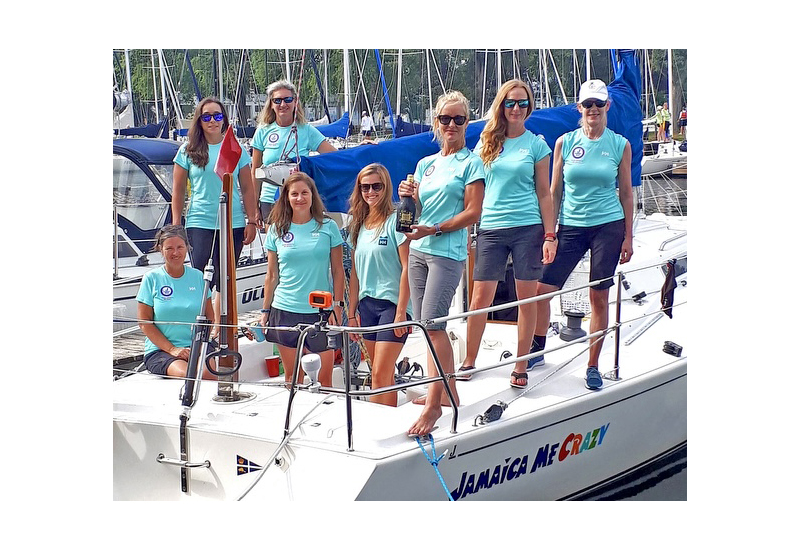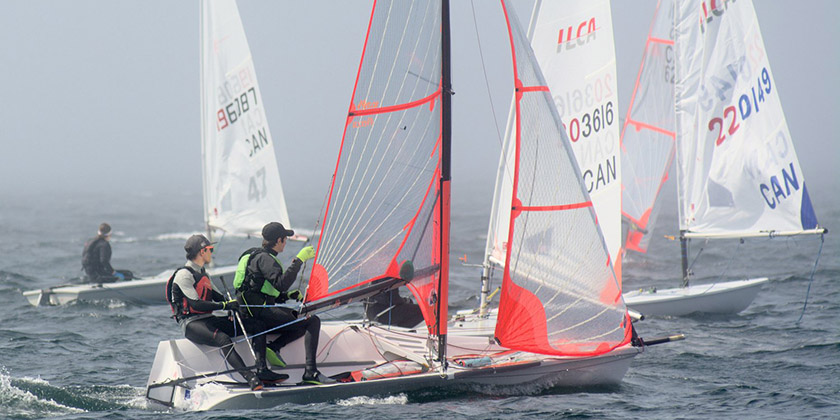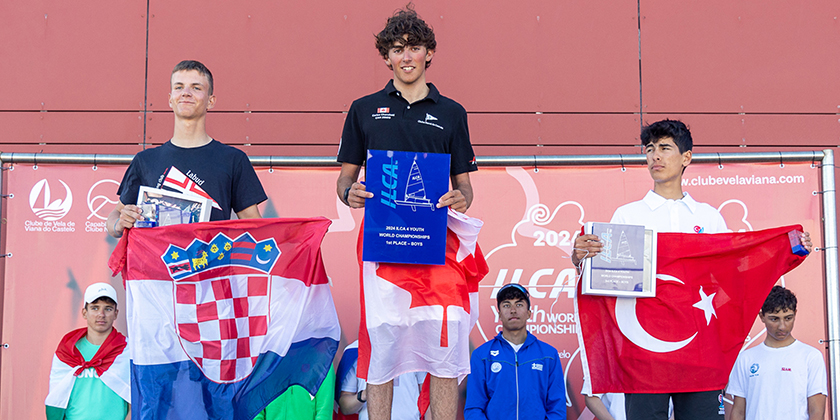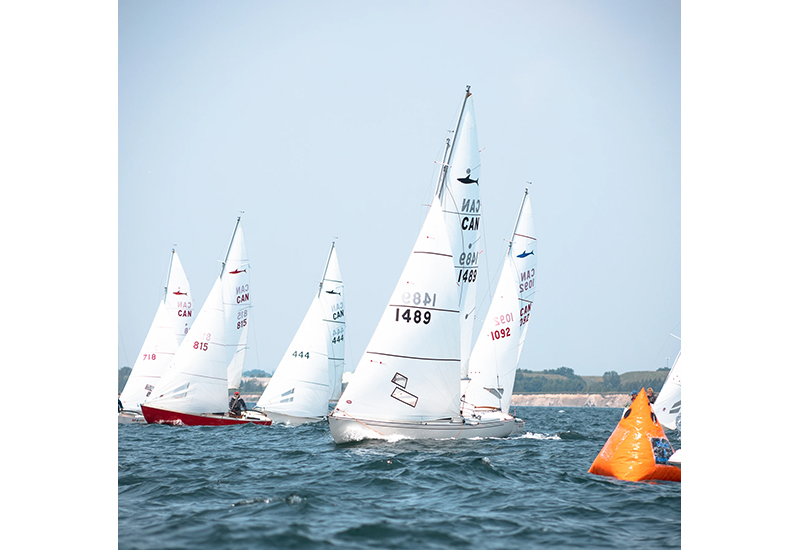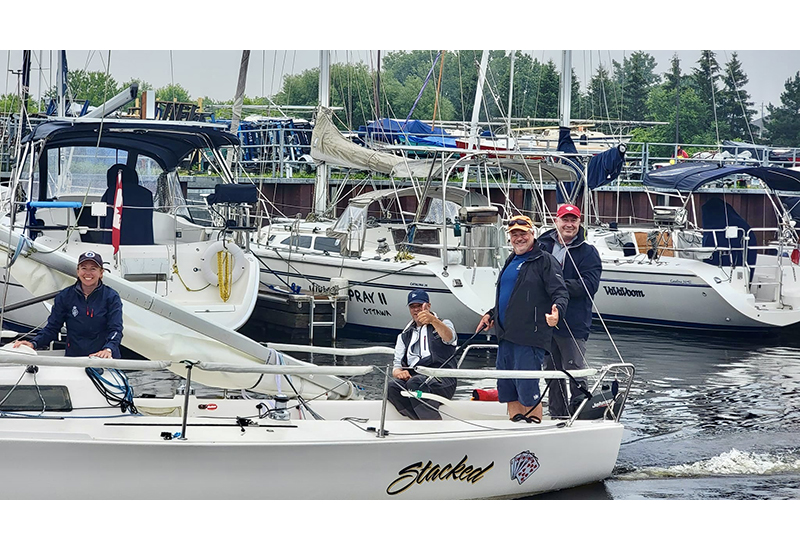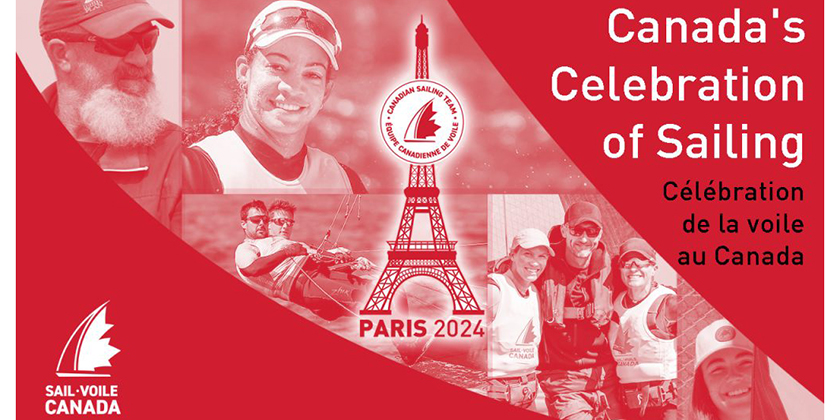Chicago-Mackinac Race—100 Knots and Off the Clock

The Chicago Yacht Club's 103rd Race to Mackinac, presented by Veuve Clicquot—Hearing that it’s windy and rainy is one thing. Hearing that water is vaporizing all around you is a completely different tale of horror.
Tim Prophit, owner and co-skipper of Fast Tango, an North American 40 out of the Bayview Yacht Club, and his crew have seen the other side. In fact, their descriptions of the 'strobing' lightning and 'white water everywhere' are on an entirely different level than anything that racing sailors in North America have seen in many, many decades.
But then again, how often have North American Corinthian sailors seen sustained winds of 100 knots? Answer: never.
Tragically, WingNuts, a Kiwi 35, capsized during this meteorological melee and two sailors, Mark Morley and Suzanne Bickel, from Saginaw, MI were lost.
Some back story: For the 361 raceboats entered in the Chicago Yacht Club’s (CYC) 103rd Race to Mackinac, the first 30 hours (tack on 24 hours for the cruising boats) were brochure-quality sailing. No bugs, plenty of breeze from the right angle, a kindly sea-state, warm air and spinnakers punctuating the horizon as far as the eye could see. Nothing broken about this picture at all…yet.
The dogs came howling off their chains on Sunday night (July 17), sometime around 2300 hours, EST. According to several different sources (all racing sailors), the breeze (18 knots) was coming from the south before the maelstrom struck. Sheet lighting started illuminating the sky, and the scramble became one of getting the kites down and hoisting heavy-air sails.
For Prophit and his Fast Tango crew, the feeling was that this storm would produce intense, short-lived winds of the one-or-two minute variety—the sort of squall that simply requires running off and letting the action pass before resuming the race. According to Peter Wenzler, Prophit’s co-skipper aboard Fast Tango, this was a very, very different situation.
'We were within five miles of WingNuts, about 3.5 miles east and 1.5 miles south,' said Wenzler. 'We didn’t think we were going to get anything like this. We were flying a reduced spinnaker that we had re-cut into a [heavy-air] Asymmetrical kite. The wind came up pretty quickly, we didn’t shock-load the sail or anything—it just disintegrated, parting at the head and down its tapes. We quickly put up the brand-new Number 3 [headsail]. Then the wind [clocked] from about 145 degrees to—BANG!—about 265. The wind was then coming down in vertical shafts.
'It came up really quickly to 60 knots, which we’ve sailed through enough times to know what it’s like. Usually, it blasts through after a minute or two, then it’s over and we can keep going. So when the stuff really hit the fan, the instinct is to bear off and run with it, initially—we didn’t have time to drop the sails or put in a reef.
'We’re just screaming downwind—the water had been pretty flat—and I’m doing my best to stay under the rig, hoping that I didn’t wipeout too badly. It was unbelievable! I’m not sure how fast we were going, but water was just BLASTING off the side of the boat. I had three guys up on the foredeck, trying to get the jib down, and then the boat just dove down, right into the lake. So we called everyone back [from the foredeck]; I figured that if the bow goes in [to the lake any further] that I’d lose control of the rudder.
'It just never stopped. It just came on stronger and stronger. It got to the point where we just had to stop and lay the boat down. Heaving-to wasn’t an option.
'Our owner always tracks [and graphs] information coming off the anemometer on his laptop—after [the worst of the storm] had passed, we took a photograph of the screen. There was a twenty-minute section in there where we were obviously exposed to some very challenging conditions.
'There was about a seven-minute section where the wind was pegged between the instrument’s maximum, which is 100 knots [Ed. Note: 100 knots is 115 mph or 200 kilometers per hour], and 90 knots. It’s just blasting out there.
There was more wind than I’ve ever experienced in 35 years of racing all over the Great Lakes and on the oceans, and I’ve been through tons of squalls. This thing was different.
'The boat really handled it beautifully. It’s absolutely watertight. We ended up just laying her down,' said Wenzler.
'We were going sideways at nine knots!' ventured another Fast Tango crewmember who was standing by during the interview.
'We were at a point where the waterline was above the cabin-house windows,' said Wenzler. 'The rig was out of the water, with the mainsail just above the water. [Brett Zimmerman] was using his body to fill the companionway. We had [companionway] boards but they were down below and this was happening now.
'I think it was a downburst, so we were screaming along in this ridiculous wind that was in front of whatever happened, and it was over-taking us. It went from a dead run to a bit of a reach, it overtook us, and [then] it was smack-dab on top of us, blowing with more force than I’ve ever seen in my life.
'The water was vaporized…pulverized… In the cockpit there was water up to my knees, and it was white. And the water outside the boat was also white. I was standing on the side of the cockpit, driving, crouched within the wheel frame, with my head ducking below the windward side of the cockpit so that I could see the instruments. Believe it or not, we were still able to give the boat some [steerage].
'It didn’t stop! It just kept going. The lightning was strobing. It was black and then white; there was so much of it that it was white all the time. Water was everywhere. Then the boat was lying on [her] side. It felt like capsizing a Thistle [e.g., a much smaller boat].
'I’m not sure how long it lasted, but it was longer than anything that I’ve ever experienced before. We were like a watermelon seed, being squeezed between two fingers—we were absolutely pressed against the surface of the water. Some crewmembers who were on the rail were thinking about how they were going to escape the lifelines if the boat went over.'
'It was 12 minutes of sustained winds over 50 knots,' said Prophit, who compared the experience to standing in the direct wash of a jet engine.
'Horrific conditions, for sure. It can be imagined that the WingNuts crew experienced a similar set of conditions. Given that a 40-footer was put on her side in this weather, it seems that the scene on WingNuts was far, far worse.
According to race regulations, all boats are must carry a GPIRB (a GPS-enabled emergency locator beacon] or a liferaft. The Chicago Mackinac Race shares the same safety requirements with the Bayview Mackinac Race. The crew of WingNuts took safety extremely seriously. Rather than simply carrying one GPIRB aboard, each crewmember was wearing his or her own personal beacon. Moreover, each crewmember was wearing a PFD and they were all also tethered to the yacht, as per sailing’s universally accepted best practices.
While WingNuts did not have a liferaft aboard, multiple ocean-racing experts agree that it could well have been useless. In winds potentially exceeding 100 knots, the raft’s tether line (attaching it to the yacht so that the crew can safely board the liferaft) could have immediately chaffed through, likely succumbing to friction between the tether line and/or lifelines or the yacht’s anti-skid deck.
Moreover, in winds potentially exceeding 100 knots, the liferaft could have immediately cartwheeled away from the yacht. This happened during the 1998 Sydney-Hobart Race, with crew aboard, in less wind.
Safety tethers have been proven to have saved countless lives, and their use is absolutely the best accepted practice for sailing offshore, at night, or anytime that there is even the slightest chance of a crewmember going overboard; PFDs, of course, should be worn at all times. These practices were exceeded by the WingNuts crew.
'An accident in sailing affects all of us who spend time on the water,' said Gary Jobson, President of US SAILING. 'There are always lessons to be learned from tragedies. It’s important that the appropriate parties take the time to thoroughly review all the factors that have taken place. Early indications, based on the report of the crew that were present, is that the accepted standard practices were met, including each member of the crew [wearing] a GPIRB. I would like to add my personal condolences to the family and crew that were part of this sad event.
'Just last week, I participated in the Marblehead-Halifax Race,' continued Jobson. 'We had a record-breaking run. I kept my safety harness attached to the boat during the nighttime hours.'
According to Chicago Yacht Club race officials, WingNuts was removed from race documents immediately following the disaster in an effort to protect the lost sailors’ families. This was by no means intended to hide information—only to help provide some privacy to the close-knit family crew aboard WingNuts amidst the media frenzy of the past 36 hours.
The CYC will republish WingNuts data on their website, in due course.
Here is a partial list of the boats that stood by to assist during the tragedy: Turning Point, La Tempete, Sociable Buzz, J Crew'd, Northstar, Nautilus, MENTAL, Que Loco II, Timberwolf, Gauntlet, Usual Suspect, Bozos Circus, Lady K, and Say Uncle.
Specifically, Robert Arzbaecher’s Sociable, a Beneteau 40.7 from the Milwaukee Yacht Club, deserves special mention, as they successfully rescued six of WingNuts surviving crewmembers. While Arzbaecher and crew have requested privacy during this difficult time, they deserve to be recognized as heros.
The loss of two sailors from the WingNuts crew is the worst tragedy in the race’s proud 103-year history.
Please take a long moment of silence to honor two lost members of our extended sailing family. Please also seriously consider the safety equipment on your boat, and constantly re-familiarize yourself and your crew on the best MOB practices.
While the WingNuts crew undoubtedly practiced excellent seamanship, and best-accepted practices, their boat was simply no match for 100-knot winds.
Sadly, this is a stark reminder that all boaters must accept the fact that—while extremely rare—these sorts of freak storms are a possibility that every skipper must be prepared to encounter.
For more information on the Chicago Yacht Club's 103rd Race to Mackinac, please visit www.cycracetomackinac.com

